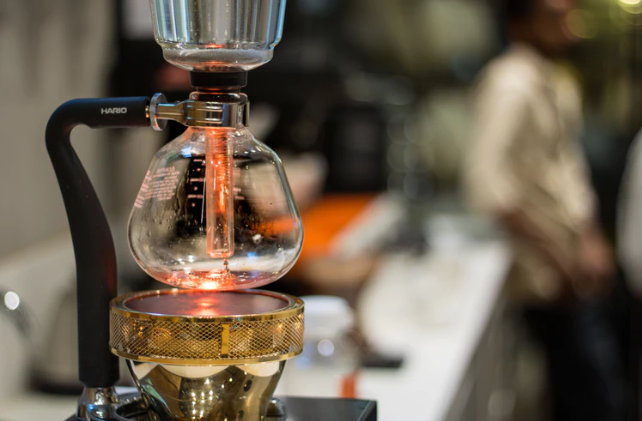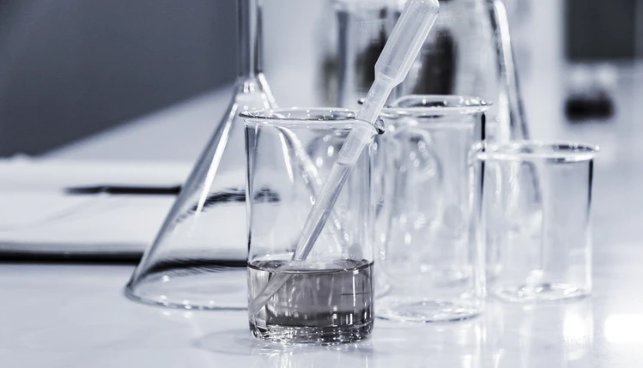
Unlike surgical instruments, lab instruments are tools used for scientific research, analysis, and experimentation. They help in measuring, analyzing, or manipulating substances and materials in laboratories, typically for chemical, biological, or physical studies.
Especially when we talk about lab glassware these include beakers, flasks (for holding or mixing liquids), and burettes (for measuring liquid volumes). While cleaning stained laboratory glassware is essential for both your safety and the success of your experiment., it’s also important to ensure that you know the proper cleaning methods to maintain the glassware’s integrity and achieve accurate results.
In this guide, we’ll go over just how to do this, so you’re prepared next time you need to do some lab cleaning.
Why Cleaning Lab Glassware is Crucial?
Laboratory glassware (like beakers, flasks, test tubes, and burettes) is commonly used to house chemicals such as strong acids, bases, water-soluble solutions, water-insoluble solutions, and volatile compounds.
These glassware items are typically made from specific types of glass, rather than materials like plastic or metal, due to their lower coefficient of expansion and greater resistance to chemical reactions.
Borosilicate glass and quartz glass are the most common materials used in the manufacturing of beakers, flasks, test tubes, ground joints, kettles, and other lab equipment.
Borosilicate glass is transparent and can endure higher thermal stress, while quartz glass can withstand extremely high temperatures and is transparent in certain parts of the electromagnetic spectrum.
One of the most crucial reasons to ensure glassware is thoroughly cleaned is safety. Residual chemicals in the glassware can react with new substances, potentially causing dangerous reactions for you and those nearby. Additionally, mixing unknown chemicals in unclean glassware can jeopardize your experiment.
To avoid such hazards, achieve success in the lab, and ensure accurate results in your studies, it’s vital to keep all vials and tubes free from contaminants, allowing you to proceed without unnecessary setbacks.
Washing Different Types of Laboratory Glassware
Knowing this, let’s explore the proper cleaning methods for various types of laboratory glassware…
Pipettes, burettes, flasks, and other graduated cylinders should be first washed with hot, soapy water. If necessary, allow the flasks to soak overnight. The next morning scrub with a brush. Afterward, rinse them thoroughly with tap water, followed by four rinses with de-ionized water. Finally, allow them to dry before storing them for reuse.
Do not towel dry or blow dry your glassware. Instead, you should let the chemistry lab glassware dry naturally unless needed immediately. Vacuuming the glassware may also prove useful in some situations, though you’ll want to take extra care and do so under guidance if attempting for the first time.
For cloudy organic chemistry glassware, start by washing it with the appropriate solvent for the chemical it previously contained. If the substance is water-soluble, use de-ionized water as the solvent. Scrub with hot, soapy water if needed, then wash with tap water and rinse thoroughly with de-ionized water to remove all soap and chemical residues.
Be aware that while cleaning or washing the volumetric lab glassware, there can be a high risk of breakage. And since associated replacement costs can be high, you need to be extra careful while accomplishing the cleaning task.
Can Acetone Be Used for Cleaning Glassware in Labs?
Acetone is widely used across various industries due to its remarkable versatility. Not only it does act as a fantastic cleaner to remove dirt, grease, and grime from surfaces but also for dissolving adhesives like superglue.
While acetone is effective on various surfaces, it is particularly suited for cleaning glass. Its low toxicity and minimal regulatory restrictions make acetone a commercially accessible and practical choice for cleaning and disinfecting lab glassware.
Notably, it is not classified as a volatile organic compound (VOC), which reduces health and environmental concerns. However, protective measures such as gloves, masks, and eye protection are recommended during use.
The most common issue that many other cleaners have with glass is that it leaves a residue behind. Not so with acetone which evaporates when exposed to the air. Depending on how much water is used, acetone can effectively clean glass and leave it bright and shiny.
One of the downsides, however, is that acetone is flammable and must be mixed with water before being used.

Can You Clean the Glass Flask and Beaker in Ultrasonic Cleaner?
Ultrasonic cleaning is perfectly safe for most types of laboratory glassware, including flasks and beakers. Beyond the lab, it’s also a great choice for cleaning other glass items like test tubes, microscope slides, pipettes, and even delicate glass ornaments or precision glass instruments.
For getting superior cleaning results, it’s however important that you choose a device that comes with a larger rinsing tank and heating element (to heat the liquid solution).
These machines harness the power of high-frequency sound waves to create a symphony of microscopic bubbles. Through the magic of cavitation, these tiny powerhouses dive into the most hard-to-reach nooks, launching an all-out assault on dirt and debris. The result you get is sparkling clean surfaces and an applause-worthy cleaning performance.
How to Use the Device?
- When using the device, carefully arrange the used lab glassware in a stainless-steel basket provided by the machine.
- Add the cleaning solution meant to clean glassware. Generally, de-ionized water will do the job but a specialized solution can also be used if you require it.
- Keep a note that the surface that needs the cleaning gets properly immersed in the ultrasonic cleaning solution.
- Now turn on the device and set your preferred time and temperature for cleaning (this should generally be based on the level of cleaning you require).
- At the end of the cleaning cycle, inspect the glassware and remove it carefully from the basket. Rinse it in water and let it dry naturally.
- Care that with regular use; the ultrasonic cleaning solution may become ineffective over time. Consider disposing of the old solution safely and replacing it with a new one periodically.
Precautions and a Few Things to Care
Ultrasonic bath cleaning, while effective for removing dirt and residues, can potentially damage the calibration of laboratory volumetric glassware.
The high-frequency vibrations generated in the ultrasonic bath can cause micro-abrasions or weaken the etched or printed calibration marks over time, especially on delicate glassware. This can lead to inaccurate volume measurements, compromising the precision of experiments and analyses.
To prevent such damage you can:
- Opt for lower frequency and power levels if the ultrasonic cleaner allows customization.
- Limit exposure time and use softer cleaning agents specifically designed for laboratory glassware to protect calibration marks.
- Consider alternative cleaning methods, handwashing with appropriate brushes and cleaning solutions may be a safer option for delicate volumetric glassware.
Final Thoughts
Be aware that even the tiniest dirt on your laboratory glassware can compromise the accuracy and reliability of your experimental results. Contaminants can interfere with chemical reactions, alter measurements, and lead to erroneous conclusions.
Therefore, it is crucial to thoroughly clean glassware before and after use, employing appropriate cleaning agents and techniques, such as rinsing with distilled water or using specific solvents to remove residues.
Ultrasonic cleaning of laboratory glassware is also a go-to method for more than a few solid reasons. Chief among them is its unmatched ability to tackle delicate, intricately designed glass with impressive precision and reliability.
With a laboratory ultrasonic cleaner in your arsenal, you can bid farewell to stubborn stains and relentless grime on all types of glassware—no sweat, no scrubbing, and certainly no wasted time.
